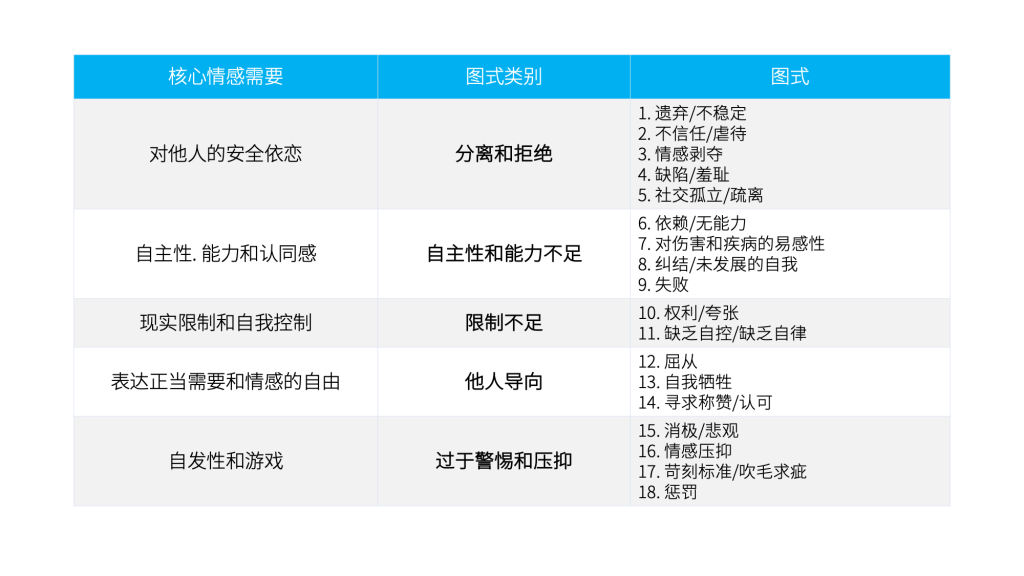图式治疗101:14. 什么是纠结/未发展的自我图式
从零开始了解图式治疗(Schema Therapy)
Enmeshment/Undeveloped Self
Excessive emotional involvement and closeness with one or more significant others (often parents) at the expense of full individuation or normal social development. Often involves the belief that at least one of the enmeshed individuals cannot survive or be happy without the constant support of the other. May also include feelings of being smothered by or fused with others or insufficient individual identity. Often experienced as a feeling of emptiness and foundering, having no direction, or in extreme cases questioning one’s existence.
纠结/未发展的自我图式指的是以完整的个性发展或正常的社会性发展为代价,与一个或多个重要他人(通常是父母)过分亲密、或者与他们有过多的情感卷入。经常伴随着这样一种信念:如果没有重要他人的支持,自己就会无法生存或无法感到快乐。经常伴有感受到与他人融合时的窒息感。或带有不完整的自我认同。经常体验到空虚、失败,没有方向,极端情况下会怀疑自己的存在。

